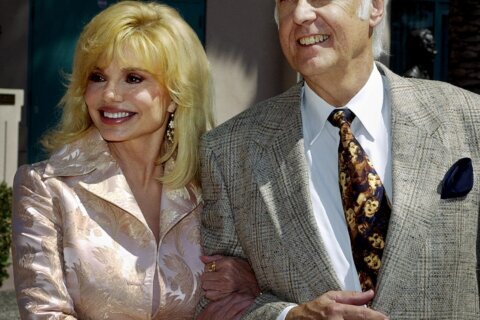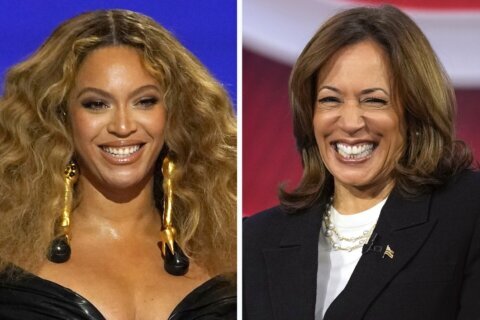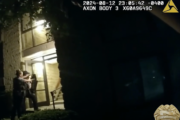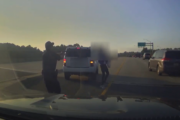WASHINGTON — Fascinating is the exchange between Western and Eastern cinema, forever linking Akira Kurosawa’s Japanese masterpiece “The Seven Samurai” (1954) with John Sturges’ beloved Hollywood remake “The Magnificent Seven” (1960).
Kurosawa was admittedly inspired by watching so many John Ford American westerns in the 1930s, ’40s and ’50s, just as Italy’s Sergio Leone launched his Spaghetti Western career with a “Fistful of Dollars” (1954) remake of Kurosawa’s “Yojimbo” (1961).
So before all you naysayers hop off your saddles and climb onto your soap boxes to shout, “How dare they remake this classic,” let’s not forget that it’s long been a two-way street to ride off into the sunset.
The new version won’t go down as a classic like 1954 or 1960 — it treads too much familiar ground to enter the film history books — but it’s still an old-fashioned, guns-blazing, crowd-pleasing thrill ride.
Set in the Old West in 1879, sadistic robber baron Bartholomew Bogue (Peter Sarsgaard) savages the small frontier town of Rose Creek. A brave citizen, Emma Cullen (Haley Bennett), hires fearless warrant officer Sam Chisolm (Denzel Washington) to round up seven gunmen to protect the town.
Rather than Yul Brynner, Steve McQueen, Charles Bronson, James Coburn, Horst Buchholz, Robert Vaughn and Brad Dexter, we get the silent-but-deadly Chisolm (Washington), smooth gambler Josh Farady (Chris Pratt), grizzly mountain man Jack Horne (Vincent D’Onofrio), tortured sharpshooter Goodnight Robicheaux (Ethan Hawke), Korean knife master Billy Rocks (Byung-hun Lee), Texican hothead Vasquez (Manuel Garcia-Rulfo) and Comanche warrior Red Harvest (Martin Sensmeier).
It’s nice to see a multicultural lineup, admirable in concept if a bit gimmicky in execution. Likewise, it’s refreshing to see an African-American cowboy ride in on a horse without the film ever once mentioning it. Forget “Django” or “Blazing Saddles;” this makes Quentin Tarantino’s “Hateful Eight” look like Mel Brooks’ “Ol’ Number Six.” This is a “Magnificent Seven” for an evolved 2016, pilgrim!
The veteran Washington is a commanding screen presence in his first-ever entry into the Western genre, letting his guns — and his eyes — do all the talking. Time and again, he reminds folks that he’s no bounty hunter, insisting he’s a man of law and order. It’s a far better performance than the gifted Sarsgaard, who overacts here in an over-the-top villain that pales to Eli Wallach’s baddie in 1960.
Among so many flashy sidekicks, not every member of the gang is given equal screen time. Separating themselves from the crowd are Bennett (“Marley & Me”), who looks a lot like Jennifer Lawrence and fights a lot like Katniss Everdeen; Pratt (“Guardians of the Galaxy”), who delivers hilarious quips with his signature Star Lord sense of humor; and Hawke (“Before Sunrise”), given the most character development by losing his nerve for pulling the trigger like Morgan Freeman in “Unforgiven” (1992).
Still, the biggest treat is watching Hawke reunite with his “Training Day” co-star Washington after their good-cop, bad-cop routine as Jake Hoyt and Alonzo Harris, the latter winning Denzel an Oscar and a spot on the American Film Institute’s Top 50 Villains. Fans can’t help but smile as Fuqua gives them a moment to hug it out, while building toward an ironic inverse of the “Training Day” finale.
King Kong ain’t got nothin’ on me! And neither does Roy Rogers.
In the years after “Training Day,” Hawke immediately embarked on his 12-year “Boyhood” project, Raymond Cruz became a tight Tuco on “Breaking Bad,” Dr. Dre widened his empire from Eminem to 50 Cent and Eva Mendes skyrocketed into a “Hitch” superstar. But the jury remains out as to who will have the better filmmaking career: Fuqua or his “Training Day” screenwriter David Ayer?
Before this year, Ayer seemed to be winning, as “End of Watch” (2012) outclassed Fuqua’s “Olympus Has Fallen” (2013) in a friendly rivalry. But in 2016, Fuqua has taken the upper hand, creating a more tonally consistent work in “Magnificent Seven” than Ayer’s superhero flop “Suicide Squad” (2016).
From the get-go, Fuqua’s tone is apparent — in-your-face gun violence setting up profiles in courage with a dash of dynamite humor. Knowing this is the late James Horner’s final film score — completed by Simon Franklin after Horner’s passing — the sweeping Western vistas become eternal canvases.
Fuqua’s shot selection is effectively varied, ranging from heroic close-ups of Denzel in his hat to John Ford-style wideshots of the landscapes, even a rock formation that looks like Monument Valley. There are also some great rapid dolly shots of horses galloping and crane shots past weather vanes.
The climatic gunbattle is well worth the wait, a flurry of kinetic violence carefully captured by Oscar-winning cinematographer Mauro Fiore and Oscar-nominated editor John Refoua, who teamed on “Avatar” (2009). Unlike that film, “Magnificent Seven” is filled with enough old-school stuntwork and explosive practical effects that we’re never once lost in the action. Fuqua also invokes a Leone-style buildup of suspense leading up to the showdowns before letting loose with Peckinpah-style violence.
The direction doesn’t quite live up to those masters — Peckinpah was more cinesthetically inventive with his bloody ballets, while Leone teased out his showdowns longer with repeated close-ups for excruciating suspense. We also miss Kurosawa’s level of mise-en-scène, as that windmill symbolically turned behind Toshiro Mifune holding an orphaned child, recalling his own childhood abandonment.
We’re again reminded of Kurosawa when “Magnificent Seven” slips into slow-mo action during the final battle, recalling that it was Kurosawa who pioneered the technique in slow-motion deaths.
But not every movie has to be pioneering. Sometimes we just want to watch frontier pioneers go at it.
The script by Richard Wenk (“The Equalizer”) and Nic Pizzolatto (“True Detective”) is for the most part effective, with laugh-out-loud jokes serving as clever buttons on the end of scenes. The plot also doubles back upon itself nicely, coming full circle to the charred church, as Denzel’s character is finally given some plausible motivation to have led this suicide mission against Sarsgaard’s goons.
On the downside, the script’s final prank is too cute by half-breaking our suspension of disbelief after what has otherwise been a violent, gritty, mostly realistic experience until then. Likewise, the final image, while paying homage to Kurosawa, is borderline corny due to the sudden arrival of narration.
But then, just as we’re about to leave on a sour note, the late Horner passes the baton to another master we’ve lost, Elmer Bernstein, as his rousing 1960 theme — voted among the AFI’s Top 10 Movie Scores — leaves us with a nostalgic end credits sequence that erases any of the film’s flaws.
Like the great line in Peckinpah’s “Ride the High Country,” Fuqua can enter his house justified.









